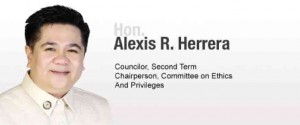Draft QC scheme offers new way to pay for gov’t lots
Beneficiaries of the Quezon City government’s socialized housing program may soon have the option of paying their lot amortization by working in local infrastructure projects.
Under a proposed ordinance expected to be approved by the city council on second reading next Monday, this “work for equity (WFE)” program would provide livelihood for urban poor families with pending debts for lot acquisition, according to the measure’s author, District 1 Councilor Alexis Herrera.
“Contractors for various infrastructure projects in the city will be compelled to accept (housing) beneficiaries with skills for the services they need, such as carpentry,” Herrera said in a phone interview.
This way, such jobs in the city would go to local residents while the government receives payment for the lots, he said. Through the proposed WFE program, the beneficiaries or members of their family may be hired for the construction and maintenance of government facilities such as public buildings, drainage and water supply systems, electrical installations, city streets and sports venues.
Article continues after this advertisement
Automatic salary deduction
Article continues after this advertisement
The city government may also tap them for cleaning up city streets, parks, plazas, playgrounds and traffic medians, and for garbage collection and disposal, among others.
Their monthly amortization, which ranges from P1,500 to P2,000, will then be automatically deducted from their minimum-wage salary, Herrera explained.
The draft ordinance was aimed at giving beneficiaries “a sustainable means” to settle their obligations, since many of those who are unable to pay end up selling their lots to informal settlers, the councilor added.
Once the beneficiaries have fully paid their amortization, they will get the land title and be dropped from the program, unless their services are still needed by the local government.
Beneficiaries who wish to avail themselves of the WFE program must apply for the available jobs. Applicants will be considered based on their skills, the size of their debt and the distance between their residence and the project site.
Around 20,000 families have benefited from the city’s socialized housing program as of last year and are expected to participate in the proposed WFE program, according to Herrera’s chief of staff, Brian Cesar Asiatico.
The housing program has three components: the community mortgage program (CMP), the direct sale program, and the relocation program, Asiatico said.
Bistekvilles
Under the CMP, the government buys land and builds a subdivision for its beneficiaries, he explained. As of May 2013, there are 10,754 families covered by this component.
Meanwhile, 5,694 families have been under the direct sale program from 1990 to June 2013. Only 1,070, however, have fully paid for their lots.
In 2013, the government collected P11,354,844.35 from the direct sale of government lots to urban poor families. The figure was 50-percent lower than that of 2012.
Under the relocation program are the National Housing Authority resettlements and the Bistekville project, the latter named after the moniker of Quezon City Mayor Herbert Bautista, who played a comic character named “Bistek” during his years in show biz.
Bistekville 1, 2 and 3 in Barangay Payatas, Barangay Kaligayahan and Barangay Escopa have a total of 1,162 housing units.
There are 12 more Bistekvilles around the city that are yet to be completed and occupied, Asiatico said.
